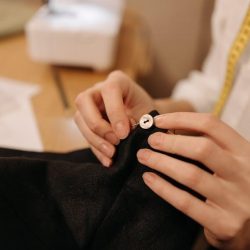Tirzepatide Reconstitution⁚ A Comprehensive Guide
This guide provides a comprehensive overview of tirzepatide reconstitution, including calculator use and dosage calculations. Learn to accurately prepare tirzepatide for injection, ensuring safe and effective administration. Downloadable PDFs with detailed instructions and calculators are available online for reference. Accurate reconstitution is crucial for optimal therapeutic outcomes.
Understanding Tirzepatide Reconstitution

Tirzepatide, often supplied as a lyophilized powder, requires reconstitution with a sterile diluent before injection. This process involves dissolving the powder to create a solution of the desired concentration. Accurate reconstitution is paramount for achieving the correct dosage and ensuring the efficacy and safety of the medication. Improper reconstitution can lead to inaccurate dosing, potentially affecting treatment outcomes. The process typically involves adding a specific volume of sterile water or bacteriostatic water for injection to the vial containing the lyophilized tirzepatide. The exact volume depends on the desired concentration and the initial mass of the tirzepatide powder, information often found on the medication’s packaging or in accompanying instructions. Many online resources, including downloadable PDFs, provide detailed step-by-step instructions and helpful tips to ensure successful reconstitution. Utilizing a tirzepatide reconstitution calculator can further enhance accuracy by automating the calculation of the required diluent volume.
Using a Tirzepatide Reconstitution Calculator
Tirzepatide reconstitution calculators simplify the process of determining the correct diluent volume. These online tools or downloadable PDF calculators eliminate manual calculations, minimizing the risk of errors. To use a calculator, you typically input the mass of tirzepatide in the vial (e.g., 5mg or 10mg) and the desired final concentration (e.g., mg/mL). The calculator then automatically computes the precise volume of diluent needed to achieve the target concentration. Many calculators offer various units for input and output, accommodating different preferences and vial sizes. Some advanced calculators might also account for factors like the type of diluent used (sterile water or bacteriostatic water) or syringe size, providing a more comprehensive calculation. Remember to always double-check the calculator’s results against the manufacturer’s instructions and use aseptic technique during reconstitution. While calculators offer convenience and accuracy, they should be considered a tool to aid, not replace, careful adherence to the product’s instructions. Free downloadable PDF versions of these calculators offer offline accessibility.

Online Calculators and Their Features
Numerous online tirzepatide reconstitution calculators offer convenient and accurate dosage calculations. These web-based tools typically feature user-friendly interfaces, requiring minimal input from the user. Common input parameters include the mass of the tirzepatide powder, the desired final concentration, and sometimes the type and volume of diluent. Advanced features may include the ability to select different units of measurement (mg, mcg, mL) and to adjust for different syringe sizes. Some calculators may provide step-by-step instructions to guide users through the process. Output typically includes the precise volume of diluent to add to the vial to reach the desired concentration. The ease of use and real-time calculations make online calculators a valuable tool for healthcare professionals and patients alike. However, it’s crucial to always verify the results with the manufacturer’s instructions for use and to ensure the website is reputable and secure. While convenient, online access is a limitation, hence the value of downloadable PDF versions for offline use.
Calculating Dosage Based on Vial Size
The vial size significantly impacts tirzepatide reconstitution and subsequent dosage calculations. Different vial sizes contain varying amounts of tirzepatide powder (e.g., 5mg, 10mg). To determine the correct dosage, one must first ascertain the total amount of tirzepatide in the vial. This information is usually printed on the vial label. Next, the desired concentration of the reconstituted solution needs to be established. This concentration often dictates the final volume of the solution. Using this information, the appropriate volume of diluent (e.g., bacteriostatic water) is calculated. Online calculators and downloadable PDFs simplify this process. For instance, if a 5mg vial is to be reconstituted to a concentration of 2.5mg/mL, the required diluent volume would be 2mL. Conversely, a 10mg vial aiming for the same concentration would need 4mL of diluent. Precise calculations are critical for accurate dosing and to avoid errors in medication administration. Always double-check calculations and refer to product instructions before preparing the injection.
Factors Affecting Tirzepatide Reconstitution
Several factors influence the successful reconstitution of tirzepatide. The initial concentration of the lyophilized powder within the vial is paramount. Vial size directly relates to the total amount of peptide present, dictating the volume of diluent required for the desired concentration. The type of diluent used also plays a crucial role. Bacteriostatic water is commonly employed, but its volume must be precisely measured to achieve the correct final concentration. Environmental conditions, such as temperature, can affect the reconstitution process. Excessive heat or cold may impact the solubility of the peptide and compromise the final solution’s stability. The technique used during reconstitution is also important; gentle swirling is preferred to avoid foaming or denaturing the peptide. The integrity of the vial itself can influence reconstitution, with damaged or compromised vials possibly leading to leakage or contamination. Finally, the user’s skill and adherence to the manufacturer’s instructions are critical to achieving an accurate and safe reconstitution. Careful attention to these factors ensures accurate dosing and patient safety. Detailed instructions and helpful online resources are available for guidance.
Ensuring Accurate Reconstitution
Precise reconstitution of tirzepatide is crucial for effective treatment. Using a reliable reconstitution calculator is the first step. These calculators, often available online or as downloadable PDFs, simplify the process by guiding users through the necessary calculations based on vial size and desired concentration. Inputting the correct values, such as the mass of the peptide and the desired final concentration (e.g., mg/mL), is essential for accurate results. Always double-check your inputs before proceeding. Once the calculated volume of diluent is determined, carefully add it to the vial using aseptic technique to prevent contamination. Gentle swirling, rather than vigorous shaking, ensures thorough mixing without causing excessive foaming or damaging the peptide. Visual inspection of the reconstituted solution is crucial. The solution should be clear and free of particulate matter. Any cloudiness or visible particles indicate potential problems requiring further investigation. After reconstitution, promptly label the vial with the concentration, date, and time of preparation to avoid errors. Adhering to these steps and utilizing a reliable calculator ensures accurate dosing, maximizing treatment efficacy and minimizing the risk of adverse events; Remember to always refer to the manufacturer’s instructions for specific guidelines.
Troubleshooting Common Reconstitution Issues
Despite careful adherence to instructions, issues can arise during tirzepatide reconstitution. One common problem is incomplete dissolution of the lyophilized powder. This might be due to insufficient mixing or the use of an incorrect diluent. If the powder doesn’t fully dissolve, gently swirl the vial for an extended period. If the problem persists, refer to the manufacturer’s instructions or consult a pharmacist. Another issue is the formation of aggregates or precipitates in the solution. This usually indicates contamination or improper handling. If this occurs, discard the solution and start again, ensuring strict adherence to aseptic techniques. Incorrect calculations leading to an inaccurate concentration are easily avoided by using a validated reconstitution calculator, preferably one found in a reliable source or provided by the manufacturer. Double-checking all inputs is crucial. If you encounter unexpected results, review your calculations and ensure the correct values were entered; Finally, if the reconstituted solution appears cloudy or discolored, it’s likely contaminated and should be discarded. Remember that using a reliable calculator, following aseptic technique, and carefully checking the final product are key to preventing these problems. Always consult your healthcare provider or pharmacist if you experience any difficulties.
Safety Precautions During Reconstitution
Strict adherence to safety protocols is paramount during tirzepatide reconstitution. Always perform the procedure in a clean, well-lit area to minimize the risk of contamination. Wash your hands thoroughly with soap and water before starting. Use sterile gloves and work on a disinfected surface to maintain sterility. It’s crucial to use only the diluent specified by the manufacturer; using the wrong diluent can affect the drug’s stability and efficacy. Follow the provided instructions precisely, paying close attention to the volume of diluent to add. Avoid injecting air bubbles into the solution, as this can affect the accuracy of the final dosage. If bubbles do appear, gently tap the vial to dislodge them. After reconstitution, thoroughly inspect the solution for cloudiness, discoloration, or particulate matter. If any abnormalities are observed, discard the solution immediately. Dispose of used needles and syringes properly in a designated sharps container to prevent accidental needle sticks. In case of accidental exposure, seek immediate medical attention. Always follow manufacturer guidelines and consult your healthcare provider or pharmacist for additional guidance or if you have any concerns about the reconstitution process. Remember, safety is paramount to ensure the effective and risk-free use of tirzepatide.
Resources for Further Information
For comprehensive information on tirzepatide reconstitution and dosage calculation, several valuable resources are readily available. The official product monograph from the manufacturer provides detailed instructions and safety precautions. This document offers precise guidance on reconstitution techniques, including the type and volume of diluent to use. Online pharmaceutical databases, such as those maintained by regulatory agencies, often contain downloadable PDFs with detailed reconstitution instructions and calculator tools. These databases can provide valuable supplementary information, confirming the accuracy of your calculations. Many reputable medical websites offer educational materials on injectable medications, covering proper handling, storage and disposal. These sources often include videos demonstrating proper reconstitution techniques, enhancing the clarity of the instructions. Peer-reviewed scientific journals can provide in-depth insights into the pharmacological properties of tirzepatide and the implications of accurate reconstitution. Always consult your healthcare provider or pharmacist for personalized guidance on tirzepatide use, including any questions you may have about reconstitution procedures. They can provide tailored advice based on your specific health needs and circumstances.





